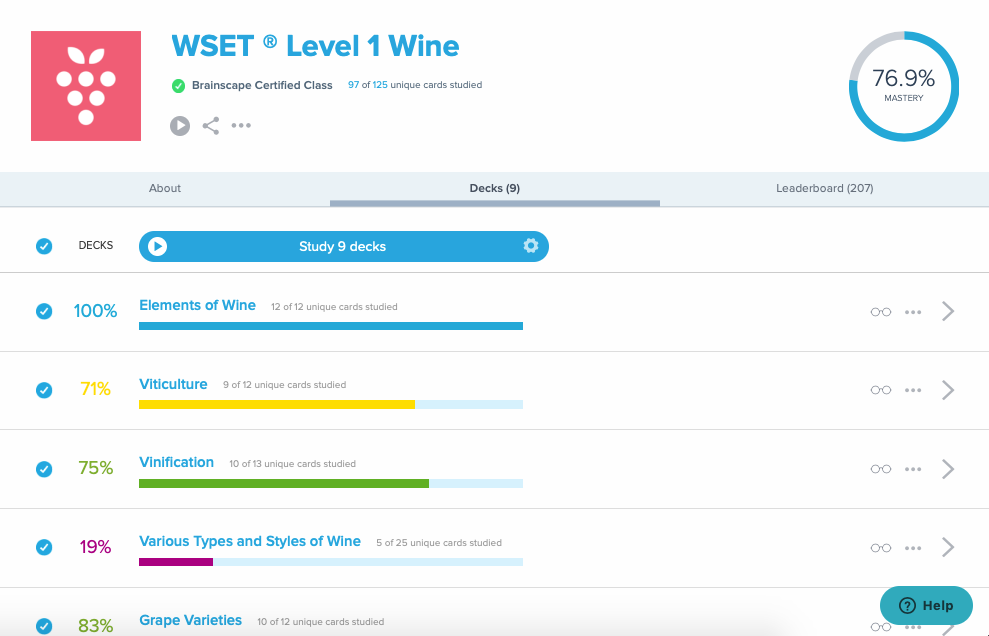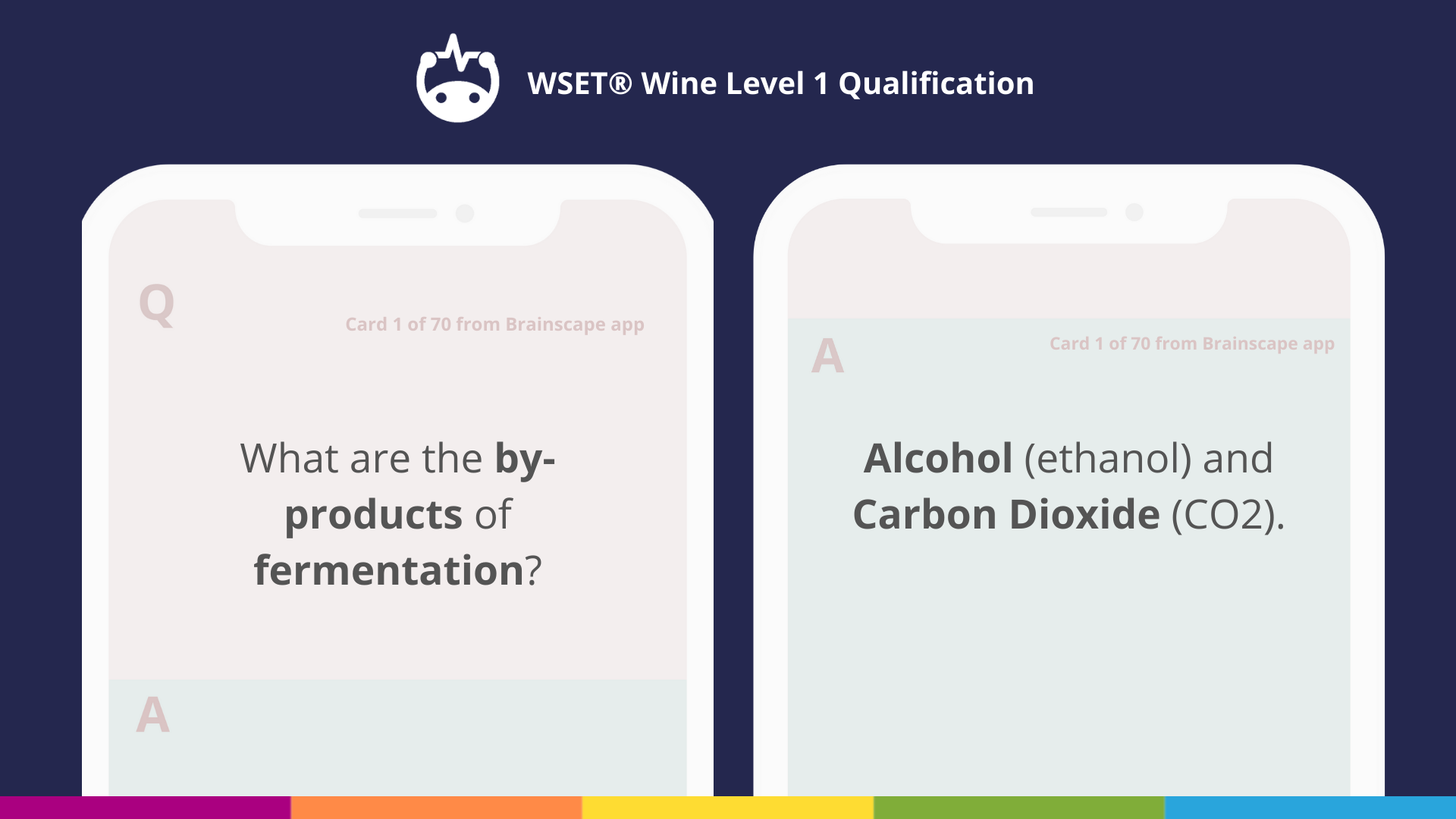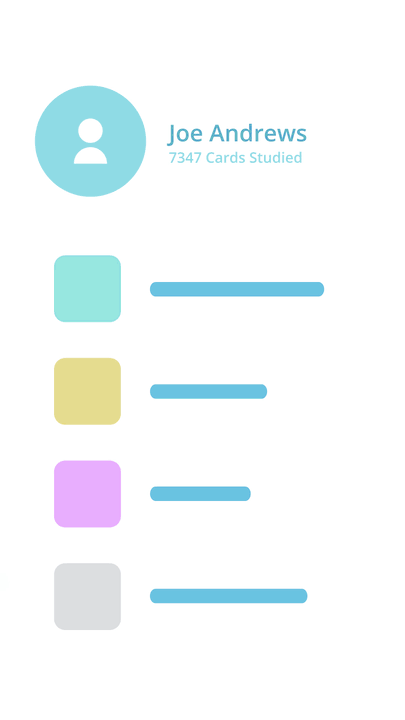Answering practice exam questions is one of the most effective ways to prepare for the real deal. It’s literally brain science. And the WSET* level 1 exam in wine is no different.
This valuable practice does the obvious: it allows you a peek under the skirts of the WSET 1 so you know what to expect. You’ll see how the exam is formatted and how its questions are delivered. With this practice, you can cook up a strategy—a plan of attack—to get through all the questions in the 45 minutes allocated.
But answering practice WSET 1 exam questions also has some serious learning benefits, which can be even more effective than traditional studying:
- It serves as valuable revision of the course content,
- It helps you identify what areas you need to focus on,
- It reinforces what areas you already know well, which can save you time, and
- It's the best antidote to exam anxiety!
This is why educators encourage students to use past exams to practice. But since the Wine & Spirits Education Trust (WSET Ⓡ) doesn’t release its past exams, Brainscape—the world’s smartest flashcard app—recruited the help of certified wine educator Brian Mitchell to create our very own WSET 1 practice exam!
This you can get for FREE by subscribing to Brainscape’s WSET 1 flashcards, which feature 9 decks of 150 cards to help you study efficiently and effectively for the exam.

BUT, before you attempt the mock exam we have put together for you, allow us to give you a few essential tips. These are geared at helping you get the very most out of this practice so that, come “E-day”, you’ll know exactly what to expect and how to shoot for distinction!
Are you ready?
Let’s do it!
What you'll discover in this WSET 1 study guide ...
- A brief overview of how the WSET 1 exam is formatted and delivered,
- Some really insightful tips to help you get the most out of the practice exam and excel on the real one,
- A WSET Level 1 practice exam, which you can get by subscribing to Brainscape’s WSET 1 flashcard program.
How is the WSET Level 1 exam formatted?

It’s pretty simple: you have 45 minutes to answer 30 multiple-choice questions in a closed-book examination. Each question has only one correct answer (worth one mark apiece) and marks are not subtracted for incorrect answers.
Absolutely all of these questions are based on the WSET 1 textbook (although Brainscape's WSET 1 flashcards conveniently condense this information for you). There are no trick questions or nasty surprises.
And, finally, you’re required to score 70% in order to pass.
In terms of mark allocation and weighting, all WSET Level 1 exams are curated to reflect the course’s learning outcomes (detailed below), which are weighted as follows:
- Learning Outcome 1: The key stages in grape growing and winemaking — 6 questions.
- Learning Outcome 2: The types, characteristics, and styles of wines from the principal grape varieties and other examples of wines — 18 questions.
- Learning Outcome 3: The key principles and practices involved in the storage and service of wine — 6 questions.
For more guidance, check out Brainscape’s articles What to expect on the WSET Level 1 wine exam and How to study for the WSET 1 more efficiently, or refer to the official WSET 1 specification handbook.
Now, let’s check out those practice exam tips!
Top tips for getting the most out of your WSET exam practice
As we’ve explained, there is soooo much value to practicing WSET 1 exam questions before facing down the real exam. This is why Brainscape has put together our very own WSET 1 mock exam, which you will automatically receive for FREE via email when you register for Brainscape’s WSET 1 flashcards.

But … in order to help you get the most value out of this essential practice, we put together the following tips ...
Tip 1: Take the WSET 1 practice exam like a real test
Set aside 45 distraction-free minutes and take the WSET 1 practice exam like it is the real thing.
That means: No breaking for the toilet, no petting the cat in between questions, no texting your crush, and definitely no checking the textbook for the answers (more on the importance of this in tip 3). If necessary, pretend that nasty headmistress Trunchbull from Roald Dahl’s Matilda is breathing down your neck.
What’s the value in this?
Any discomfort you might feel is a valuable lesson!
- Running out of time to answer everything? Lesson learned: rethink your strategy!
- Getting thirsty? Lesson learned: bring water with you to the examination room.
- Need the toilet? Lesson learned: make sure you go to the restroom beforehand.
- Cat giving you allergies? Why is there a cat in your examination room? Also, bring tissues to the exam.
Do you see why you should take the practice WSET 1 exam like it’s the real thing? This essential practice highlights the challenges you may not have foreseen, whether it’s a critical time crunch to an uncomfortable bladder.
Then, on test day, you can make sure you’re prepared!
Tip 2: Time yourself

Following on from the previous tip, give yourself 45 minutes to complete the practice exam (set a timer). 45 Minutes is all you’ll get for the real WSET 1 exam so if you find yourself running short on time, you’ll know you need to tweak your approach.
Pro Tip: If you’re struggling with a question, move on and work through the rest of the exam. Then, when you’re done, come back around and tackle it and any other challenging questions. This will prevent you from running into a time crunch.
Also, you should ideally leave yourself at least five minutes to run through all your answers, looking for any boo-boos or unanswered questions. It happens more often than you think!
Tip 3: Feel the burn of the knowledge deficit
The last thing you want during an important exam is any kind knowledge deficit. HOWEVER, during a practice exam, not knowing the answer to a question is not necessarily a bad thing, contrary to your soaring anxiety. In fact, it is an important opportunity to learn!
You see, when your brain comes across a question it doesn’t know the answer to, it becomes primed to learn and remember the answer to that question. It’s the burn of the knowledge deficit that creates really deep neural pathways to information.
So if this happens to you on the practice exam, resist the urge to consult the textbook. Answer as best you can and then, once the time is up, review your answers and refer to the textbook to fill in your knowledge gaps. You’ll probably never forget that information again!
Pro Tip: You should actually attempt a WSET 1 practice exam early on in your course. Sure, you probably won’t know the answers to the questions yet but you’ll learn what the expectations are and how the questions are framed. And this’ll prime your brain for learning!
Tip 4: Identify and target your weaknesses
One of the greatest benefits of taking a WSET 1 practice exam is that it holds up a mirror to your wine knowledge, which gives you the opportunity to identify and address your weaknesses. This also saves you time on reviewing the topics you have already mastered.
This whole approach is a major premise of Brainscape’s flashcard app. Based on how confident you feel, the app’s spaced repetition algorithm will repeat the flashcards you don’t know all that well often, and those you do know well, less often.
This makes studying super efficient, while allowing you to razor focus in on your weak areas.
See for yourself how Brainscape works! (And get your free WSET 1 practice exam).

So, as you work through your practice exam, make note of the questions you struggle with. Use Brainscape to create flashcards for these questions and then practice those flashcards until that information becomes deeply ingrained in your head!
[Need a little help? Check out Brainscape’s ultimate guide to making flashcards]
Tip 5: Read the questions carefully
One of the most common reasons students trip-up and leave precious marks on the table is that they’re anxious. And in their anxiety, their brain races ahead and interprets the question before they’ve even finished reading the words on the page. This can lead them to the wrong answer, which is a tragic waste of marks.
So, when you take on the WSET 1, take a deep breath, try to steady yourself, and then read (and reread) the question from beginning to end. Do you understand what it’s asking you? Good! Now think of the answer and see if it shows up in the multiple-choice list provided.
You’ll probably only have to do this consciously for the first few questions while your nerves settle and you get into your rhythm. But it is important that you make that conscious effort.
Tip 6: Engage your powers of active recall

All 30 questions posed by the WSET level 1 exam have multiple-choice answers. Now, most students consider this cause for celebration. After all, recognizing the answer in a multiple-choice list is easier than having to come up with it yourself, from scratch.
This might make the actual exam feel a little less intimidating. BUT answering multiple-choice questions isn’t an effective way to learn. And since the goal of taking a practice exam is to learn, we really recommend you answer the questions from memory.
Try this:
- Cover up the list of multiple-choice answers with your hand or a piece of paper.
- Read the question carefully (tip 5): do you understand what it’s asking you?
- Allow your brain to retrieve the information from your memory of the coursework.
- Now try to match your answer to one of the multiple-choice answers on the exam.
This achieves two things. For starters, recalling the answer unassisted—by using your brain’s powers of active recall—is a far more powerful way to permanently learn that information. Active recall establishes deeper memory traces than recognition, which is what happens when you select an answer from a multiple-choice list.
And secondly, using your own memory to arrive at an answer prevents you from potentially getting distracted and confused by the list of other answers provided. The last thing you want to do is second guess yourself!
The ultimate preparation for the WSET 1 exam
Ultimately, the goal of exam practice is to prepare you for the real thing. But if you just casually run through the exam to get a gauge on how well you know your sh*t, you’re missing out on the lion’s share of the value, which is to:
- Reinforce and revise your knowledge,
- Expose any weaknesses you might have so you can address them,
- Practice your timing and test-taking strategy,
- Alert you to physical needs like using the restroom and coming prepared with drinking water, and
- Overcome any exam anxiety you might be grappling with.
But, if you follow the guidelines laid out in this article, you’ll get the MOST out of your WSET 1 practice exam, which will empower you to kick butt on exam day!
Don't miss our other WSET Level 1 study guides:
- How to study for the WSET Level 1 exam more efficiently
- What to expect on the WSET Level 1 wine exam
- How to get a job in wine with the WSET Level 1 qualification
P.S. When you're ready to take your next step to WSET Level 2, we have expert-curated flashcards and study guides to help you crush that challenge!
*Disclaimer: Brainscape has worked with top wine experts to supplement the official publications and preparation offered by WSET.
